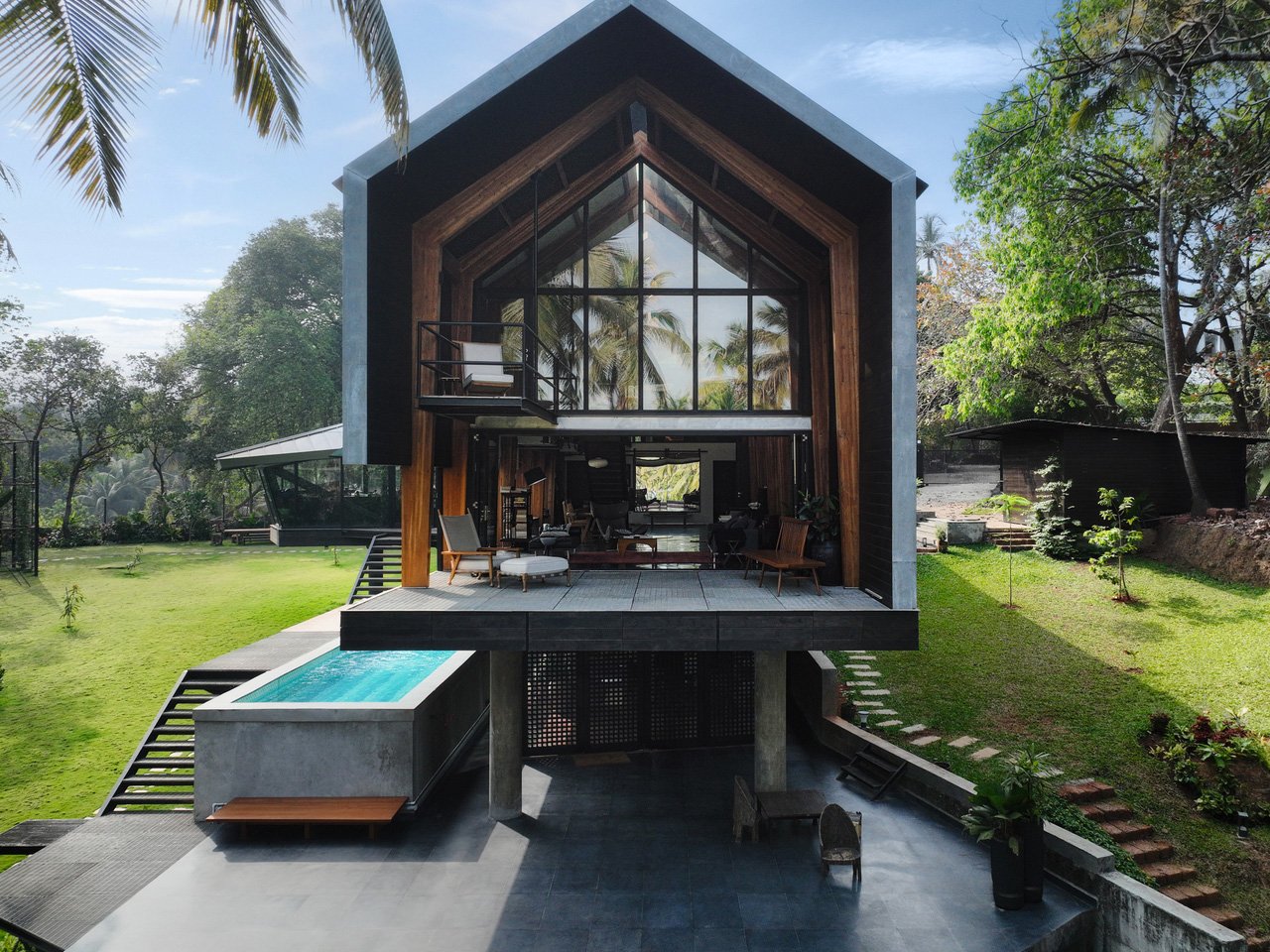Overlooking the lovely coastline of Vagator, Goa, sits something India has never seen before. Architecture Discipline’s Timber Residence breaks new ground as the country’s first mass timber home, proving that environmental responsibility and stunning design can work hand in hand. Architect Akshat Bhatt wanted to create more than just another luxury residence. The 8,650 square foot structure challenges everything we think we know about Indian construction.
The secret lies in eleven glulam portal frames, each one carefully crafted in New Delhi before making the journey to Goa. These aren’t your typical building materials. Glued laminated timber represents a completely different construction approach, where pieces get stronger when combined rather than weakened. The entire house operates like sophisticated building blocks that can actually be taken apart and moved elsewhere decades from now.
Designer: Architecture Discipline
From the outside, charred-wood cladding gives the home its stunning weathered appearance while protecting it from monsoon rains and coastal salt air. The linear design captures sweeping views of both the Arabian Sea and Chapora River, turning the house into a front-row seat for nature’s daily show. Inside, exposed timber beams steal the spotlight, their raw authenticity warming rooms finished with black granite floors and deliberately bare white walls.
The lower level houses something special: a glass-enclosed wood workshop bathed in natural light from clerestory windows above. This creative space opens onto a timber deck that feels more like an outdoor room than a traditional balcony. Instead of walls or railings, planters define the deck’s edges, keeping the connection to the surrounding landscape completely uninterrupted. The workshop becomes a bridge between indoor creativity and outdoor inspiration.
Building on a cliff in Goa means preparing for nature’s worst moods. Bhatt worked with engineers to ensure the structure could handle fifty years of typhoons and torrential rains without flinching. The glulam construction method does something remarkable: it removes carbon from the atmosphere during production. While concrete construction takes from the environment, this timber approach gives back, making each beam part of the solution rather than the problem.
International architecture publications have taken notice, recognizing this project as a catalyst for change across India’s building industry. The residence is proof that sustainable construction doesn’t mean compromising on quality or beauty. With India’s population demanding smarter housing solutions, this Goa home shows a path forward where environmental consciousness and architectural excellence aren’t just compatible but essential partners in creating the future of responsible design.
FAQs
1. What makes the Timber Residence unique in India?
This home is a real first for India, it’s the country’s debut mass timber house, built using glulam frames instead of the usual concrete or steel. What sets it apart is how it was designed: almost like a giant set of building blocks that can be taken apart and moved if needed. The focus on sustainability, adaptability, and a much lighter environmental footprint makes it a standout in Indian residential architecture.
2. Why use glulam (glued laminated timber) instead of concrete or steel?
Glulam is a bit of a game-changer. It’s incredibly strong, but much lighter than concrete or steel, and it can be prefabricated, which means less mess and faster building on site. The real bonus is that timber stores carbon, so using glulam helps the environment rather than hurting it. You get all the strength you need for a modern home, but with a much smaller carbon footprint.
3. How does the Timber Residence handle Goa’s harsh coastal weather?
Goa’s weather can be tough, think heavy rains, salty air, and the occasional typhoon. The Timber Residence was built with all that in mind. Its charred-wood exterior helps protect it from moisture and decay, and the engineered timber frames are made to last. Every detail, from the materials to the structure itself, was chosen to make sure the house stays comfortable and resilient, no matter what the weather throws at it.
The post India’s First Mass Timber Home In Goa Raises The Bar For Sustainable Living first appeared on Yanko Design.

